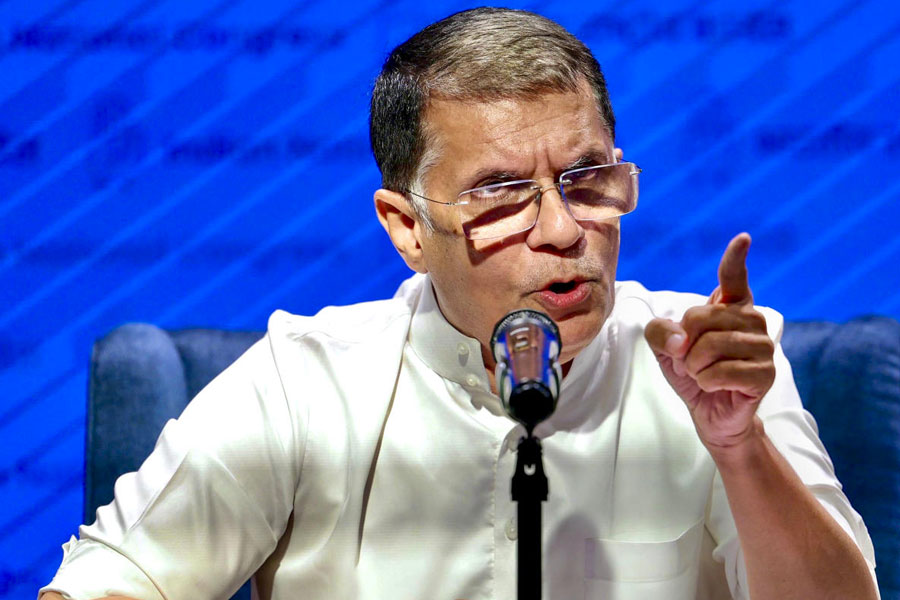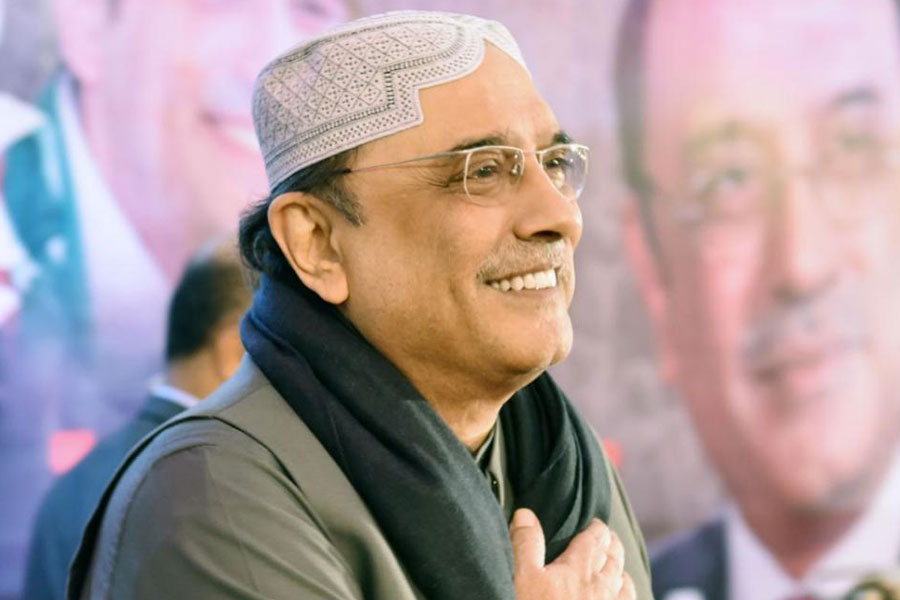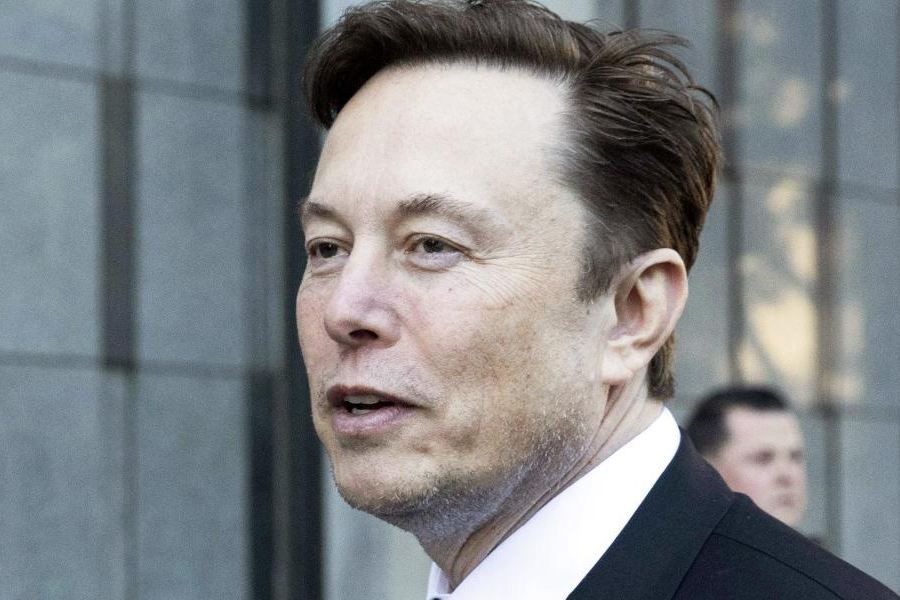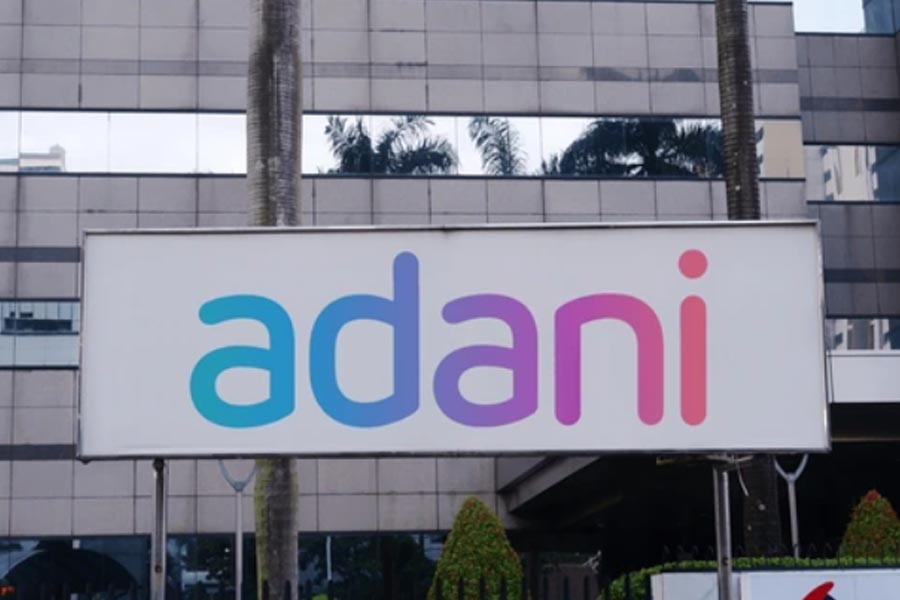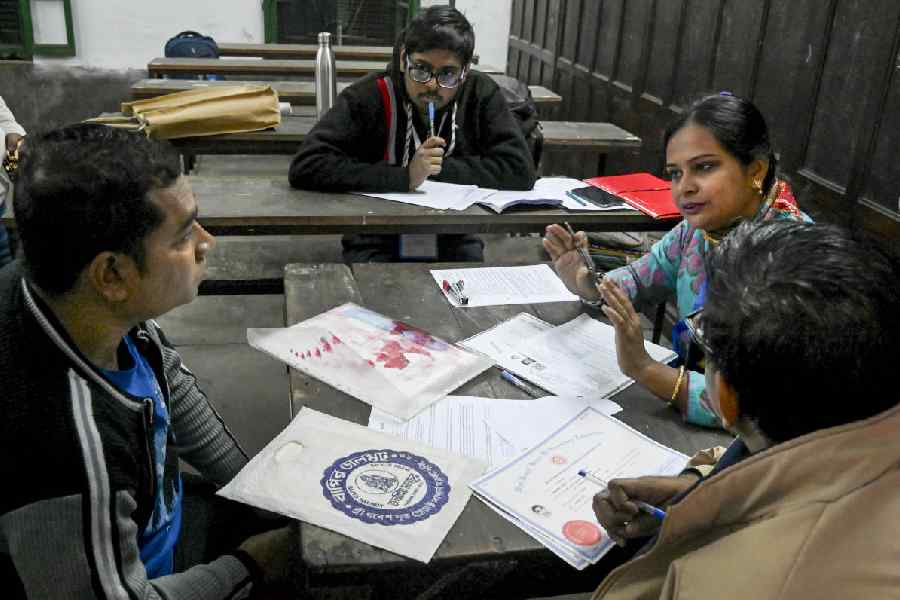 |
Socialist leader George Fernandes’s legacy still lives on in Muzaffarpur.
In 1977, residents were captivated by just the image of Fernandes behind bars. Fernandes was arrested on the charge of smuggling dynamite — in what came to be known as the Baroda dynamite case — to blow up government establishments in protest against the imposition of Emergency. Such was the impact that Fernandes won by over 3 lakh votes even though he was an outsider. The victory left the opposition dumbstruck.
Harendra Kumar, the RJD’s state vice-president, is among the Fernandes’s followers who cannot forget those glorious days of Muzaffarpur politics. “Georgeji was in jail. A poster of him handcuffed went viral in 1977 and he won the general election,” Harendra said.
For Muzaffarpur residents, Fernandes was synonymous with development. During his first tenure as MP, he set up a Doordarshan Kendra (1978), the Kanti Thermal Power Station (1978) and the Lijjat papad factory to generate employment. Fernandes also insisted on women’s empowerment, which Nitish Kumar seems to follow now.
In 1979, Fernandes joined the Lok Dal, which his followers were unhappy about. At a rally in Company Bagh, frustrated and angry voters booed him away by throwing slippers and pebbles. The opposition made an issue out of the Doordarshan Kendra inauguration, raising slogans like: “TV nahi, roti chahiye (We want bread, not TV).”
Despite the discontent, Fernandes won the 1980 general election, defeating Digvijay Narayan Singh of the Janata Party. He remained undefeated in 1989 and 1991. In 1991, Fernandes was leading the crusade for reopening the Motipur Sugar Mill, the sudden closure of which had led to unemployment. “Throughout his tenure, Fernandes has fought for his people, their rights and development,” Harendra said.
In 1996, after forming the Samata Party with Nitish Kumar, Fernandes moved base to Nalanda but returned to Muzaffarpur in 2004. Nitish Kumar denied him a ticket from Muzaffarpur in 2009.
Jai Narayan Nishad’s three consecutive wins in 1996, 1998 and 1999 changed Muzaffarpur’s political scenario. In 1993, Nishad held a rally in Sikanderpur, along with Phoolan Devi, a Mallah by caste. Over 2 lakh Mallahs attended the rally, turning Nishad into a Robin Hood for the community. The polarised vote of the Mallahs was the reason behind Nishad’s uninterrupted wins from Muzaffarpur.
This time, it’s his son Ajay Nishad, who is the BJP’s candidate from Muzaffarpur. Ajay, who like his father has switched parties, having been in the RJD before, had lost two Assembly elections from Kurhani and Sahebganj. And yet he claims talk of a Modi tsunami an understatement as “people of Muzaffarpur vote for candidates, not party.”
He went on to say: “I am a clear winner, will win by over 2 lakh votes.” He is banking on their traditional votebank of around 2.5 lakh Mallahs.
As the voting day draws near, the residents witness trails of SUVs with star campaigners waving from side windows. The constituency, “overcrowded” with 29 contestants among which Akhilesh Prasad Singh from the Congress, Vijendra Chaudhary from the JD(U) and Ajay Nishad from the BJP are the main contestants.
Nishad who has switched loyalties earlier was in the RJD and the BJP. He lost two Assembly elections from Kurhani and Sahebganj during his stay in the RJD, and then switched over to the BJP.
Even after three consecutive terms, father Nishad could not develop his constituency like George being an “alien” did. Dr M. Ibrahim (60), a CPI worker who has been practising for the past 45 years, at Mazjid Chowk remembers the golden era of George.
 |
“Nishad, during his tenure, has failed in every front — be it education, electricity or roads. Roads have caved in, the Kanti thermal plant has been non-functional since 2003,” Ibrahim said.
Fernandes, who has won nine Lok Sabha elections, contested from Muzaffarpur as an Independent in 2009 despite being the convener of the BJP-led NDA. Denied a ticket by the JD(U) on health grounds, the party’s leaders Sharad Yadav and chief minister Nitish Kumar refused to pay heed to the BJP’s pleas that Fernandes be accommodated.
 |
Fernandes had then called Nitish an autocrat openly. But Fernandes, till then was unaware of the social engineering of Lalu Prasad and Nitish Kumar. He lost the battle and could bag only 22,804 votes.
Vijendra Chaudhary, who changed the party thrice in a week from LJP to RJD and finally landed up in the JD(U) is the new controversy in the party. The social engineering of Nitish is the reason behind Vijendra’s confidence. More than 3.5 lakh members of EBC are the votebank of Vijendra.
He said the political switchovers don’t affect the voters. “The voters judge the candidate by their work not by how many times they have switched parties,” said Vijendra.
Sranath Singh (72), a businessman in Sakari around 15km from the town, recalls the day when Muzaffarpur was a constituency of socialites.
“Fernandes was a socialite first, then a politician. But gradually the caste segmentation by the political parties has made the situation worse. The voters will vent their anger on the turncoats. Finally, we will vote for the candidate from our own community. The George era is lost,” said Singh.
The constituency has around 2.5 lakh Bhumihars — a few blowing in the “Modi wave”, while a few to their castemen.
lMuzaffarpur votes on May 7


